The algo-kinetic work “Don't look at me” is reacting to human attention with sound and movement: The more attention it senses, the more stressed and disharmonic the entity becomes. If there is only one human present the entity is relaxed, emitting harmonic sounds and slow movements. The work is reflecting on the topic of attention. Attention has emerged as the primary metric in social media, and most of their algorithms are designed to harness and shape human attention, trying to keep the users on their platform, leading to severe real-world consequences. The work is designed to have an anti-social media algorithm.
Central to the installation are the newly developed robotic actuators, consisting of resonator tubes and vibrato elements. These actuators physically generate sine waves, drawing inspiration from the avant-garde acoustic designs of Harry Partch. Visually, the work is referencing the tensegrity principle, introduced by Buckminster Fuller and Kenneth Snelson in the 1970s. The actuators are positioned within this 2,5m x 2,5m big moving tensegrity structure, offering an spatial experience for the humans around it. The algorithm of “Don't look at me” is sensing the humans around it and the attention they are giving to the entity. Thus, the work is reflecting on the balance between organisms in shared ecosystems.
Developed and premiered in 2023 by Moritz Simon Geist & Team in Seoul at ZER01NE Arts Incubator

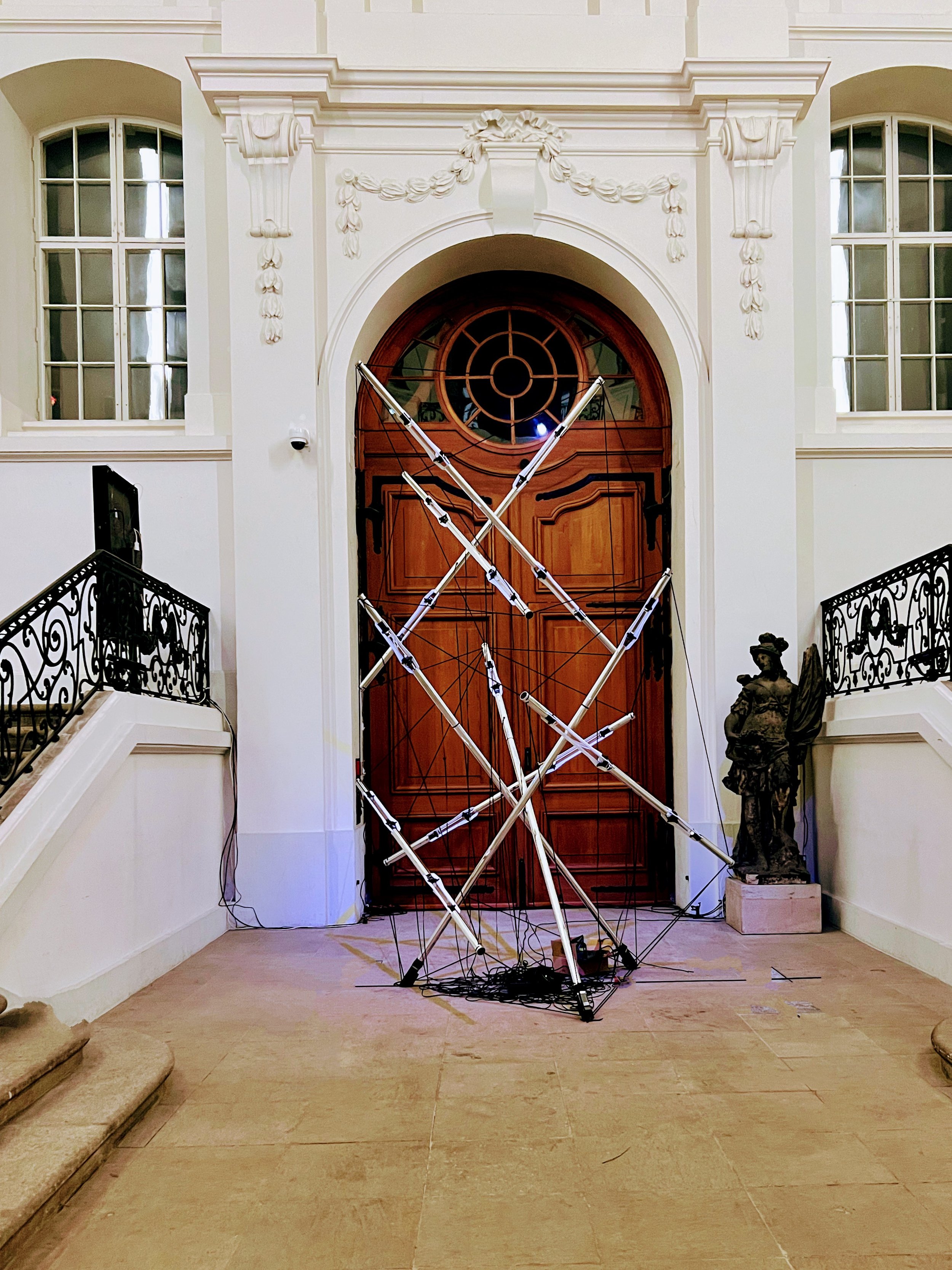
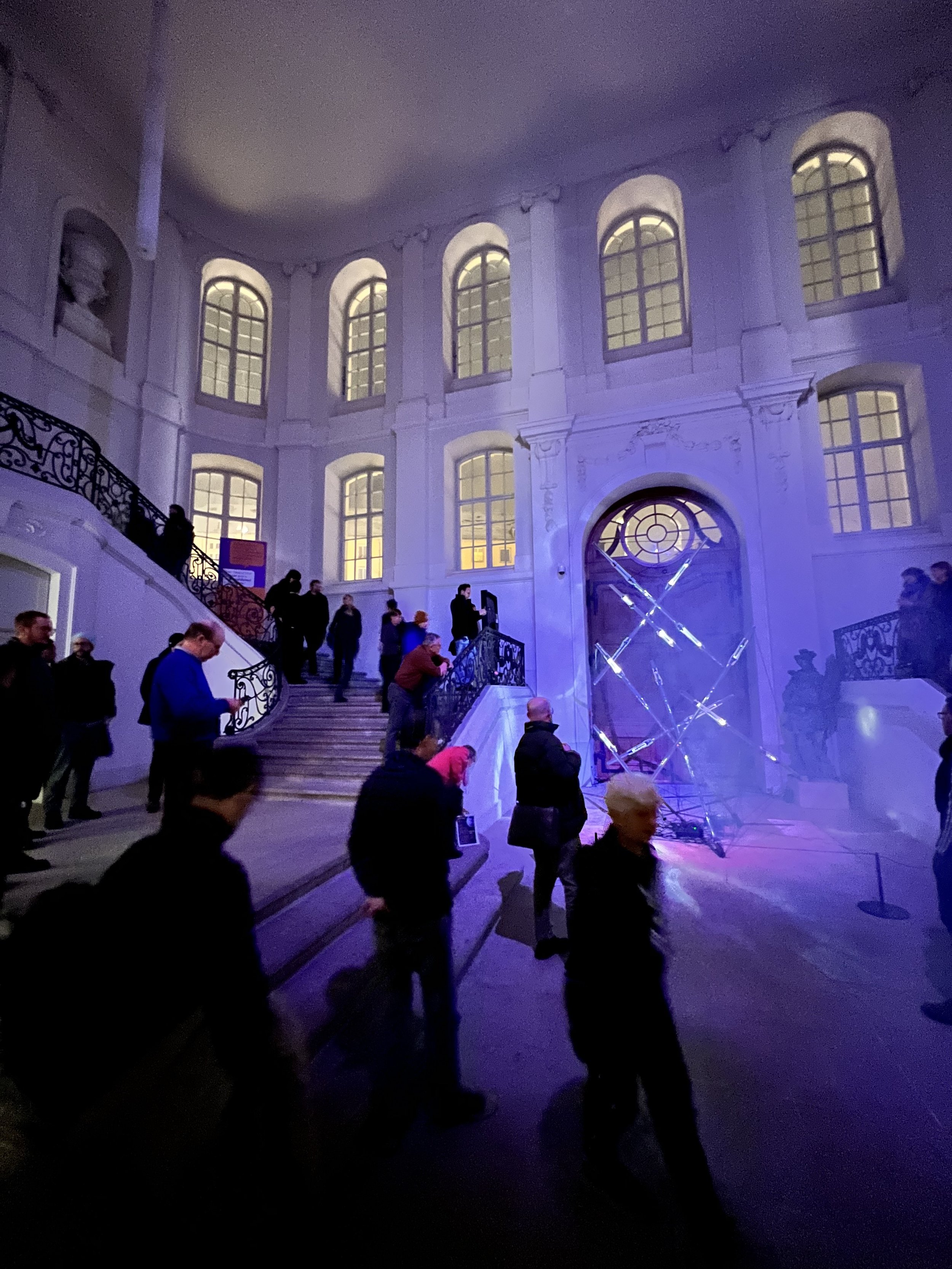

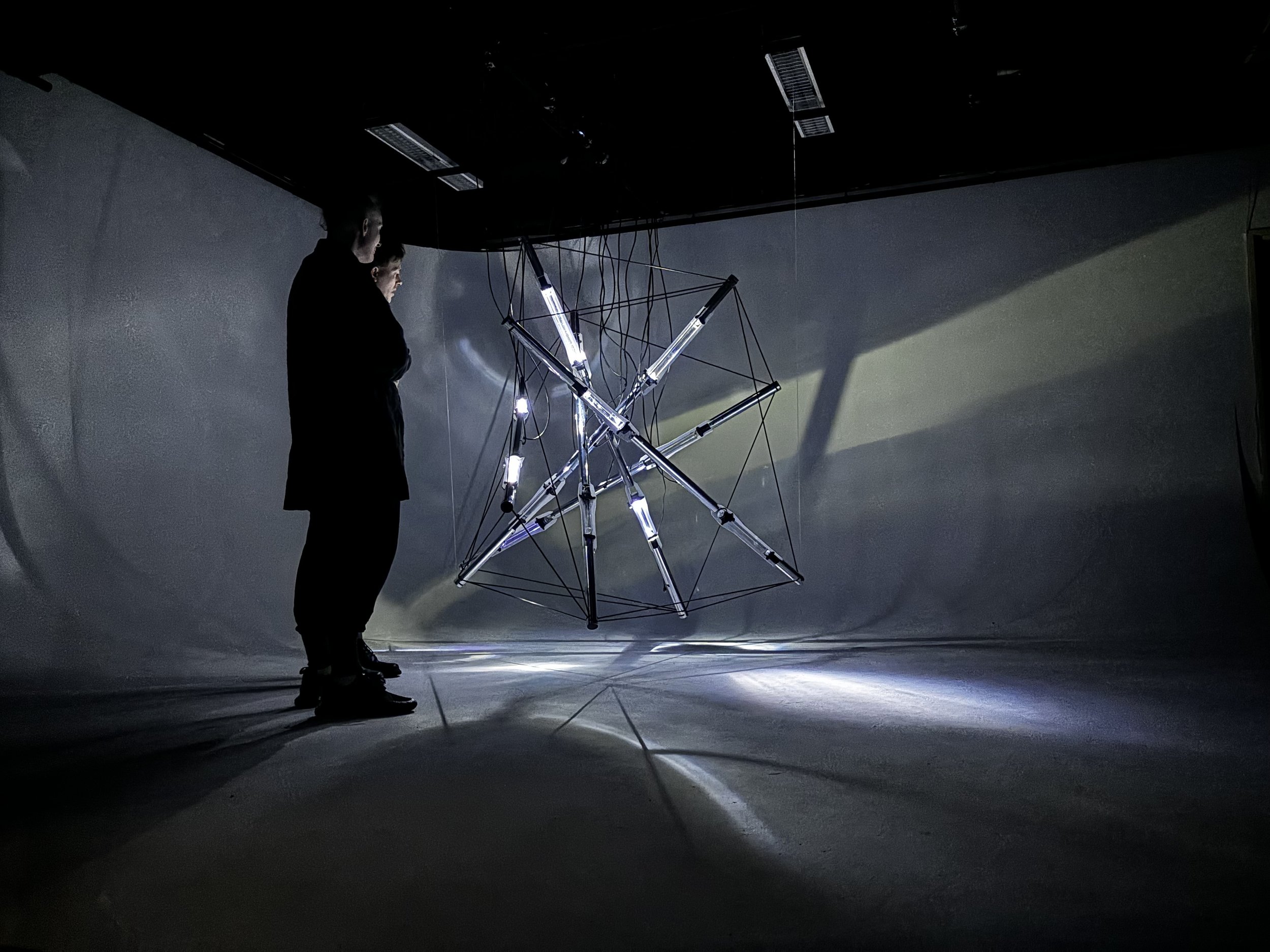
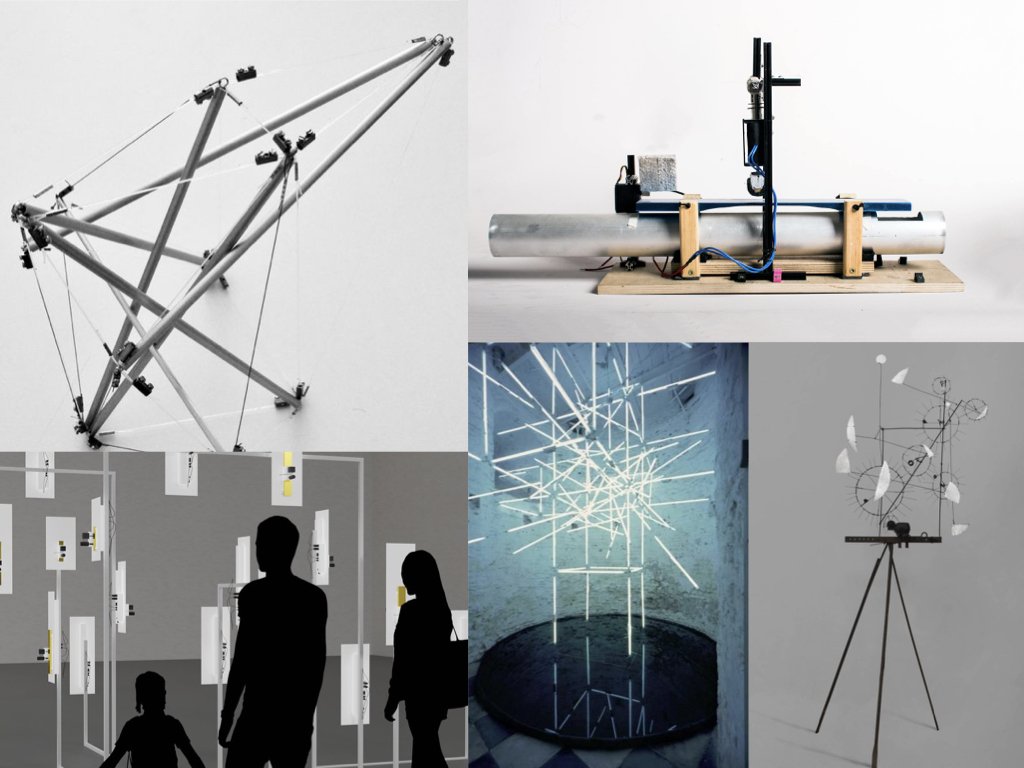
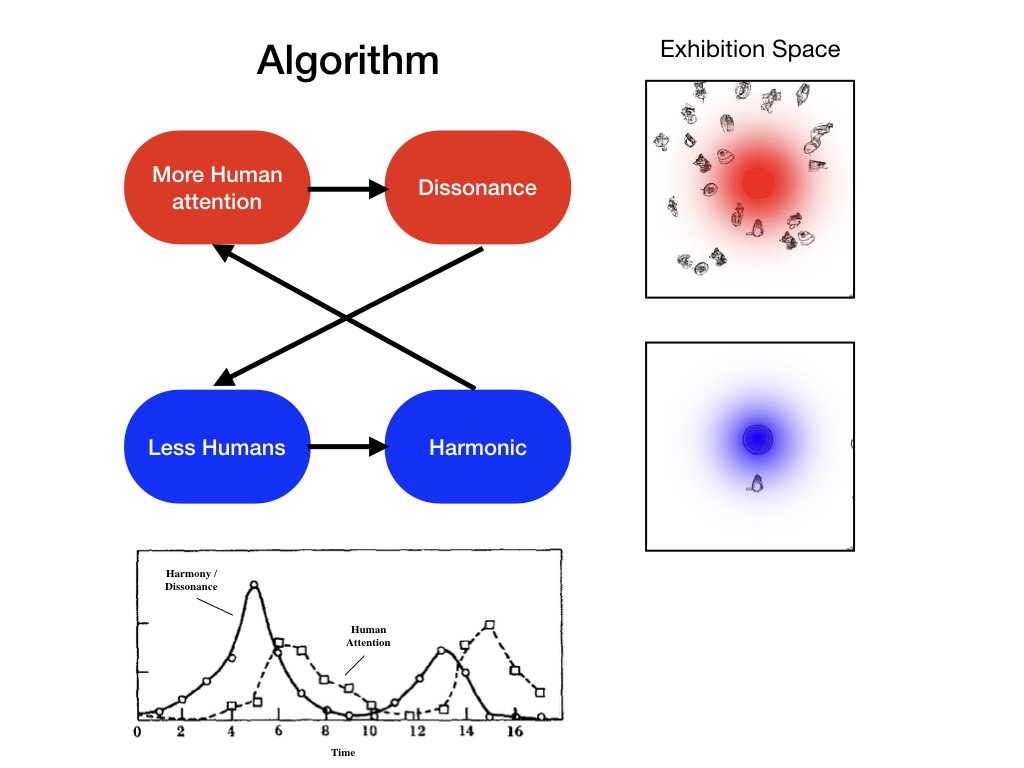

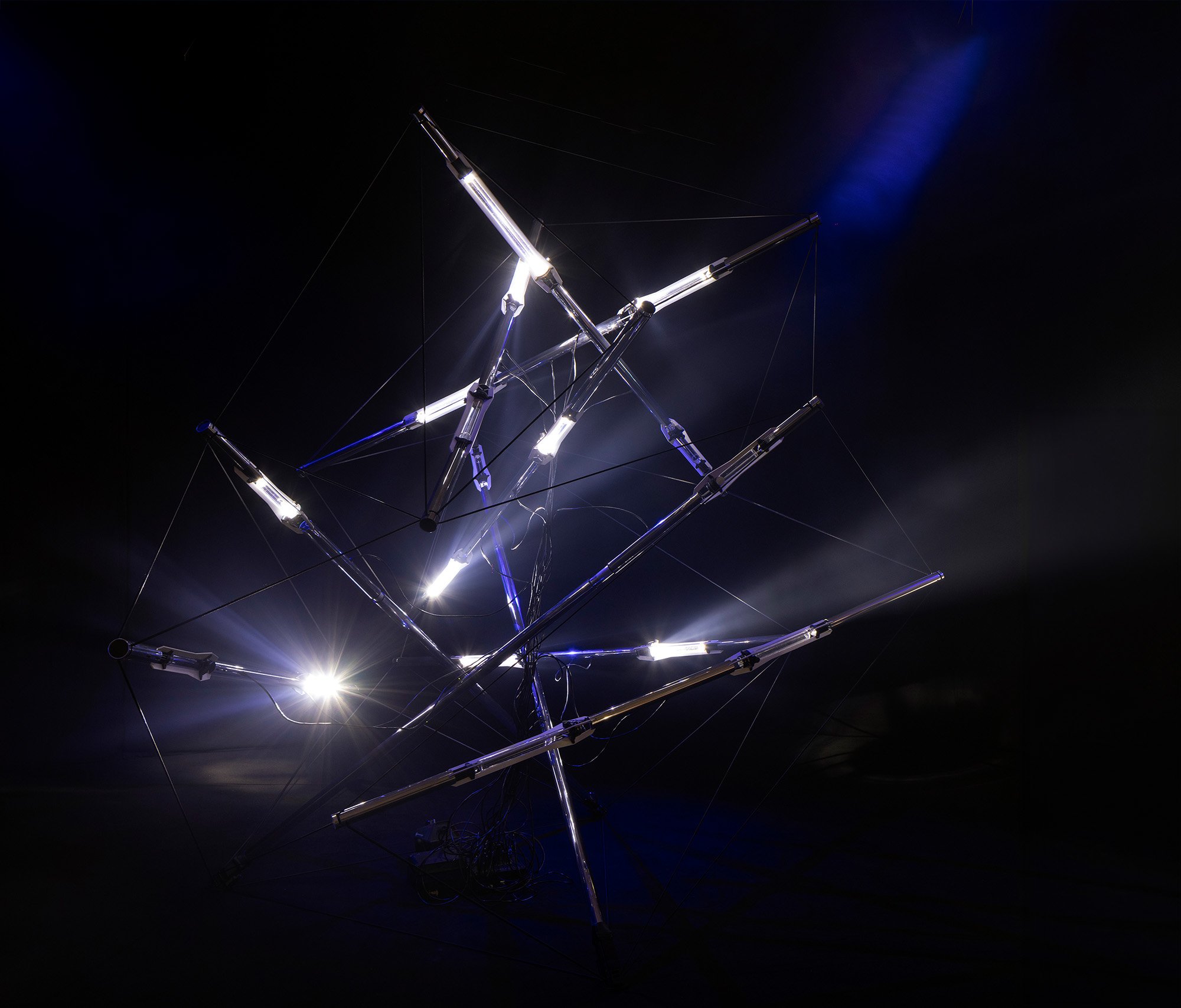
Sound Design
Central to the installation are the newly developed robotic actuators, consisting of resonator tubes and a vibrato element. These actuators generate sine waves, evoking the sounds of the Vibraphone and Baschet Instrument. Drawing inspiration from the avant-garde acoustic designs of Harry Partch — an American composer celebrated for his ventures into microtonal scales and distinctive instrument creations — the actuators are positioned within the tensegrity structure, offering an spatial experience for the humans around it.
Attention
The work explores the balance of organisms in shared ecosystems. Where the lines between the organic and the technological blur, reminiscent of Donna Haraway‘s vision of a cyborg existence, the artwork explores the coexistence of humans and artificial structures in a shared setting. The work was developed with attention beeing the main metric for social media algorithms in mind. Social networks maximizing view time and the attention given to chunks of media, dictating how artists shape their work and how humans interact with algorithms.
Using attention as this bridge, the work prompts a reflection on the interconnectedness of beings, machines, and the environments they inhabit. This interconnectedness is further based on the works of Buckminster Fuller and Kenneth Snelson, renowned for merging biology with design. The piece invites viewers to navigate a world where technology is not just an external tool but an intrinsic part of our fabric.
(“Donna Haraway: A Cyborg Manifesto”)
Structure & Aesthetics
The design is based on Tensegrity principles, formulated by Kenneth Snelson and Buckminster Fuller in the 1970s. It incorporates the tonal actuators in an aluminium frame, with newly developed linear actuators to distort the tensegrity structure, evoking a "breathing" movement, which gives the organism an uncanny human-like vibe. Made of polished aluminum, the structure houses internal cabling and lighting for a seamless look.
Interaction
The object, while seemingly inanimate, has an ingrained persona. As the organism interacts with humans, it seeks equilibrium in its shared environment. Contrary to common social media algorithms that thrive on maximal attention, this meta-object yearns for minimal engagement. A camera system mounted atop feeds data to an algorithm, tracking audience movement, density, and proximity. These parameters shape the composition algorithm, sound, movement and light.
TEAM
Albrecht Meixner - Programming
Anika Jankowski - Managment
Benno Bruksch - Design
Carl Ahner - Design
Florian Burdyl - Composition, Programming
Jonas Engelhardt - Mechanics
Justus von Harten - Electronics
Mareike Pittig - Mechanic, Design
Paul Werner - Programming, Electronics
Funding
The work was cofunded by ZER01NE 2023
